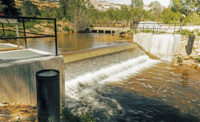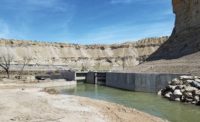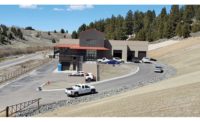Steinaker Service Canal Project Reach II and IIIA
Vernal, Utah
Best Project
Submitted by: BHI
Owner: Uintah Water Conservancy District
Lead Design Firm: Bowen Collins and Associates
General Contractor: BHI
As part of an extensive modification effort, this project’s scope of work included enclosing the Steinaker Service Canal within a pressurized pipeline and installing more than 15,000 linear ft of 78-in. solid wall high density polyethylene (HDPE) pipe. Other elements included air valves, manways, drains, turnouts, screening structures, electrical and instrumentation systems and construction of a new access road.
Spanning roughly 12 miles, the canal was losing approximately 5,000 acre-ft of water annually, equivalent to 25% of the water released from the reservoir. Enclosing the canal enhances water quality by preventing trash and debris from entering the system and bolsters public safety for children and animals by eliminating hazards tied to an open canal. The project contributes to drought resilience by conserving the water flowing through the canal.
The canal delivers 250 cu ft per second of irrigation water to users in the Ashley Valley via 50 turnouts. Construction began in October 2022, and by the end of May 2023, the project was successfully delivering water to customers.

Photo by Jeremy Gudac
Installing the largest solid wall HDPE pipe in the U.S. came with both challenges and a learning curve. Given the pipe’s massive diameter, the project team had to figure out the maximum bend radius the Talon fusion machine could straddle over the pipe without causing damage, then collaborate to design all the necessary bends and radiuses.
Each section of pipe has a diameter of 78 in. and is 53 ft long and weighs 16,500 lb, so installation required multiple Fusion machines, 400 class excavators, articulating haul trucks and other equipment, each weighing in excess of 100,000 lb. Crews also had to work with a restricted right-of-way, so the team grubbed and excavated the existing canal, laid out the pipe, fused the 78-in. pipe, then installed and backfilled.
A prolonged winter in Vernal made working with a clay canal more complex with wet and muddy conditions. To keep the project on schedule, the team strategically placed pumps to regulate water levels, utilized blankets to manage frost and used track-out mats to keep the equipment on top of the mud.





Post a comment to this article
Report Abusive Comment